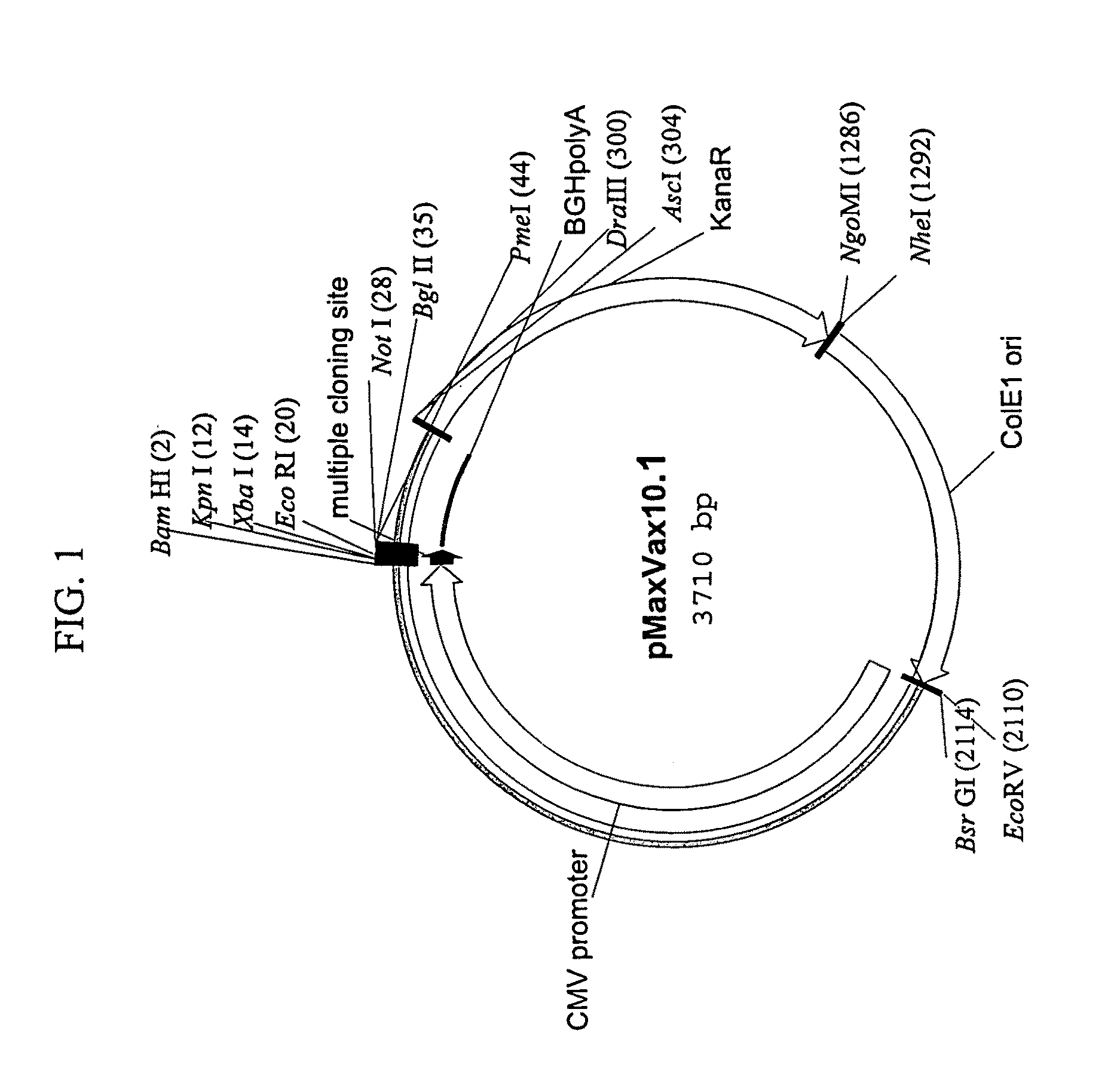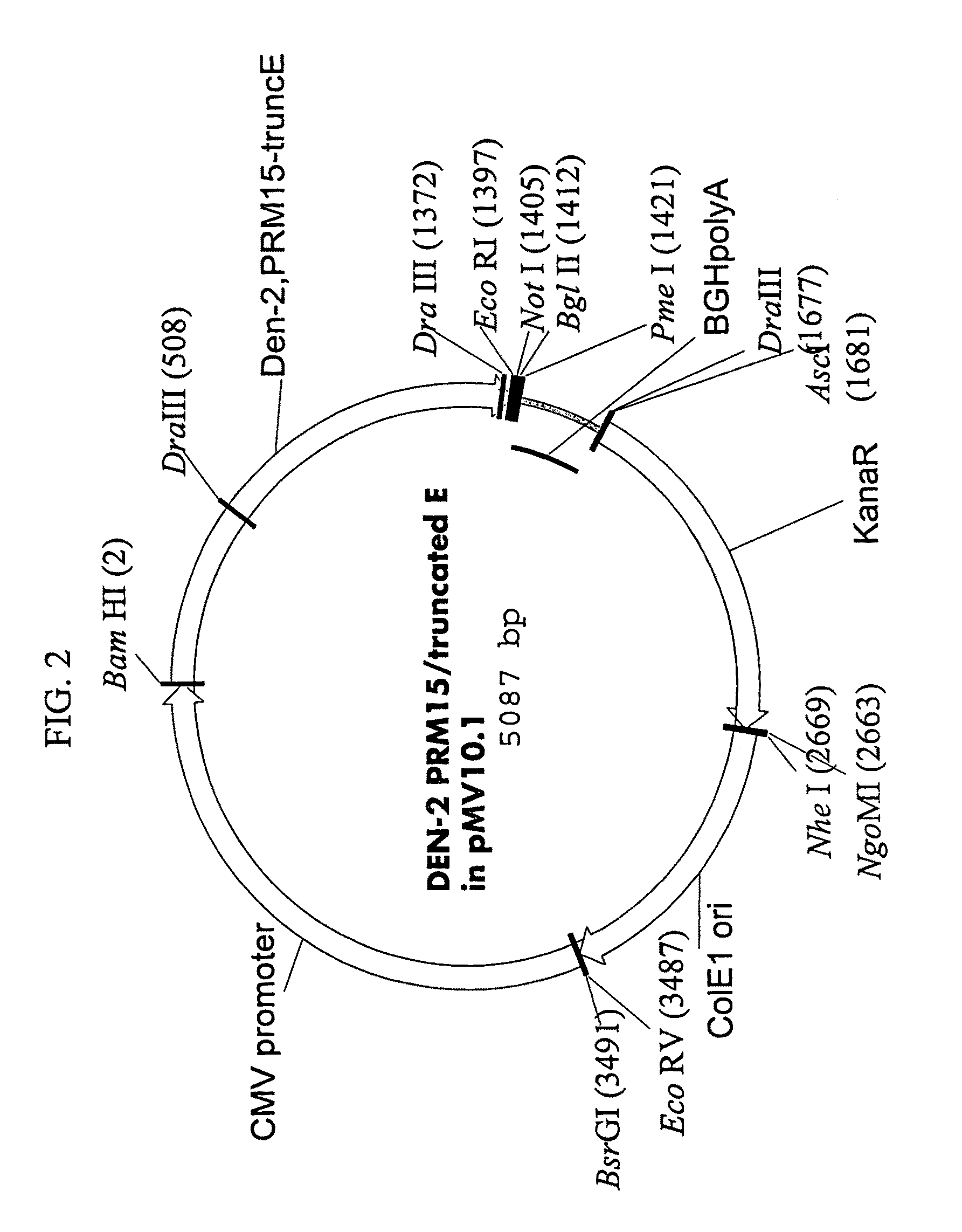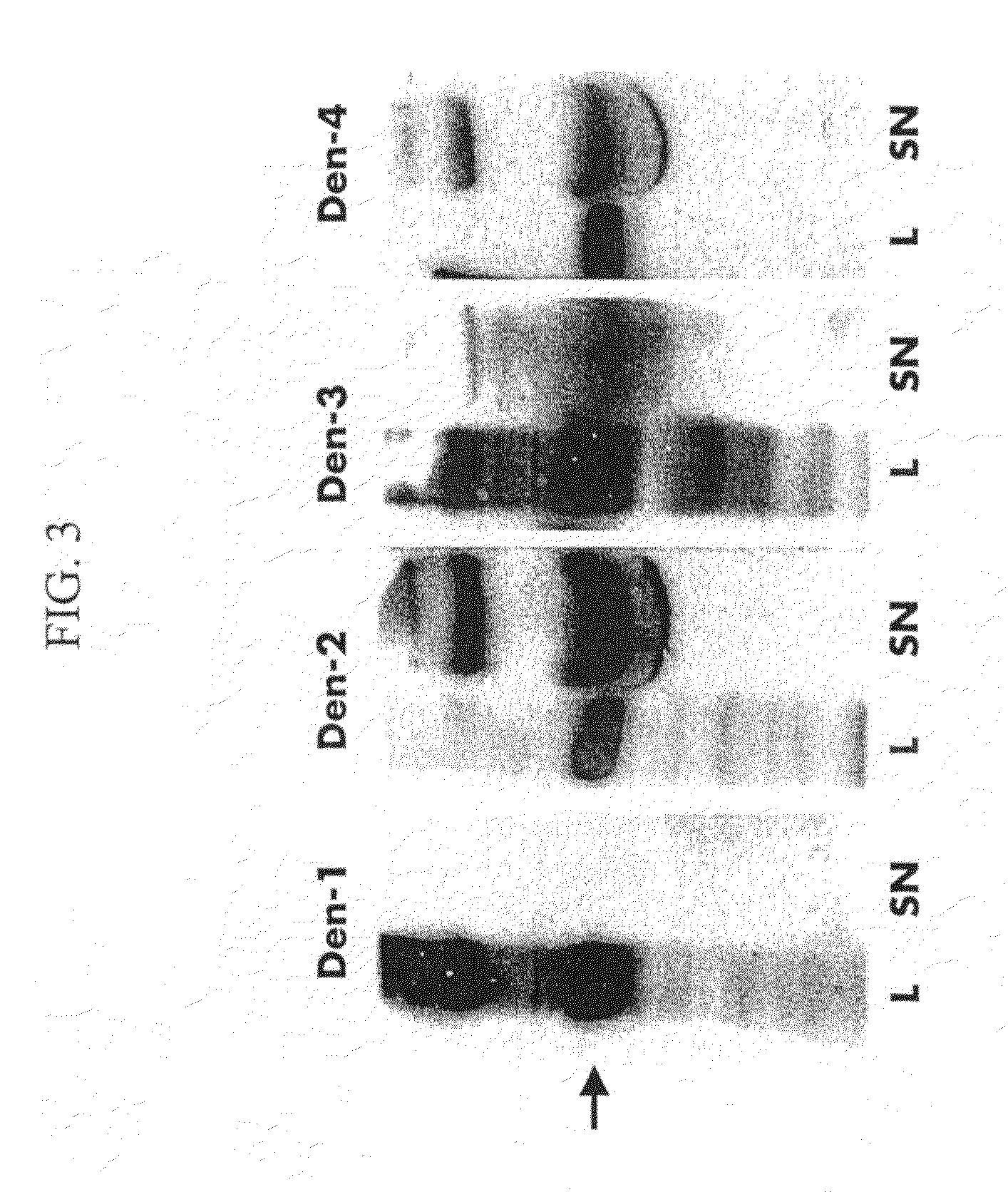Nucleic acids encoding novel chimeric C15/prM/E dengue virus immunogens prepared by DNA shuffling
a technology of nucleic acids and dengue virus, which is applied in the field of polypeptides, can solve the problems of no specific treatment for dengue virus infections, difficult to accurately diagnose dengue virus, and significant threat to people living with dengue infection
- Summary
- Abstract
- Description
- Claims
- Application Information
AI Technical Summary
Benefits of technology
Problems solved by technology
Method used
Image
Examples
example 1
[0572]This example illustrates the generation and identification of novel nucleic acids that encode recombinant, synthetic or mutant dengue virus antigens, polypeptides comprising such dengue virus antigens, the construction of an exemplary DNA vectors for delivery of such nucleic acids to mammalian cells, and the expression of such nucleic acids by transfection of mammalian cells with such a vector, resulting in high levels of expression and secretion of the encoded dengue antigens.
A. Synthesis of Novel Dengue Antigen-Encoding Nucleotide Sequences
[0573]The amino acid sequences of the various proteins of each of the four WT DEN-1, DEN-2, DEN-3, and DEN-4 viruses were analyzed to identify the following regions of the polyprotein of each of the four WT dengue virus serotypes: (1) the amino acid segment or fragment of the dengue polyprotein sequence corresponding to the C-terminal 15 amino acids of the prM protein (“PRM15”), which 15 amino acid segment of the prM protein may serve as a...
example 2
[0598]This example illustrates exemplary methods for generating libraries of nucleic acids encoding recombinant dengue antigens and screening or selecting from such libraries to identify recombinant nucleic acids that encode recombinant dengue antigens in mammalian cells.
[0599]Libraries of recombinant nucleic acid sequences were generated by recursive sequence recombination procedures using purified Den-1PRM15 / tE CO, Den-2PRM15 / tE CO, Den-3PRM15 / tE CO, and Den-4PRM15 / tE CO, e.g., as parental nucleotide sequences. The recursive sequence recombination procedures were conducted as described previously in, e.g., Stemmer (1994) Nature 370:389-391 and Crameri, A. et al. (1998) Nature 391:288-91, U.S. Pat. No. 5,837,458, and other references cited above in the section describing recursive sequence recombination, each incorporated herein by reference in its entirety for all purposes.
[0600]Briefly, each pMaxVax10.1 expression vector comprising a Den-1 PRM15 / tE CO, Den-2 PRM15 / tE CO, Den-3 PR...
example 3
[0609]This example describes the production and identification of recombinant nucleic acids that encode multivalent dengue antigens using recursive sequence recombination methods and chosen selection / screening procedures.
[0610]Clone 2 / 7 was selected from a library of clones comprising recombinant nucleic acids produced according to Example 2, after being identified as positive for the expression of a recombinant dengue antigen by FACS analysis. The nucleic acid sequence of clone 2 / 7, comprising a recombinant PRM15 / trunE sequence is shown in SEQ ID NO:156. (The nucleic acid sequence of clone 2 / 7 comprising only the recombinant truncE nucleotide segment is shown in SEQ ID NO:285.)
[0611]293 cells were transfected with pMaxVax10.12 / 7 or pMaxVax10.1Den-3PRM15 / tE CO using standard techniques and according to manufacturer's instructions, as described above. The transfected cells were cultured for about 48 hours under conditions permissive for nucleotide (e.g., transgene) expression, harves...
PUM
| Property | Measurement | Unit |
|---|---|---|
| nucleic acid | aaaaa | aaaaa |
Abstract
Description
Claims
Application Information
 Login to view more
Login to view more - R&D Engineer
- R&D Manager
- IP Professional
- Industry Leading Data Capabilities
- Powerful AI technology
- Patent DNA Extraction
Browse by: Latest US Patents, China's latest patents, Technical Efficacy Thesaurus, Application Domain, Technology Topic.
© 2024 PatSnap. All rights reserved.Legal|Privacy policy|Modern Slavery Act Transparency Statement|Sitemap



